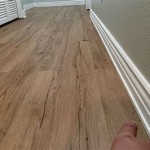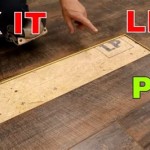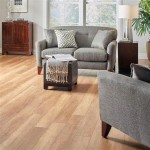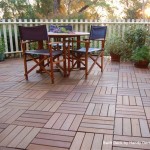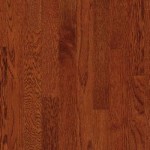Swiftlock Laminate Flooring Care Instructions
Swiftlock laminate flooring offers a durable and aesthetically pleasing surface for residential and commercial spaces. Proper care and maintenance are crucial to preserving its appearance and extending its lifespan. This article provides comprehensive instructions on how to effectively clean and maintain Swiftlock laminate flooring, covering routine cleaning, stain removal, preventative measures, and addressing common issues.
Routine Cleaning Procedures for Swiftlock Laminate Flooring
Regular cleaning is the cornerstone of maintaining Swiftlock laminate flooring. Consistent removal of dirt, dust, and debris prevents the accumulation of abrasive particles that can scratch and dull the surface over time. Frequency of cleaning depends on foot traffic and environmental factors, but a general guideline is to sweep or vacuum at least twice a week in high-traffic areas and once a week in lower-traffic zones.
Sweeping: Utilize a soft-bristled broom to sweep the floor thoroughly, paying attention to corners and edges where dust and debris tend to accumulate. Ensure the broom bristles are clean to avoid simply redistributing dirt across the floor.
Vacuuming: Employ a vacuum cleaner specifically designed for hard floors. Avoid using vacuums with beater bars, as these can scratch and damage the laminate surface. Opt for a vacuum with a brush attachment or a setting that disables the beater bar. Thoroughly vacuum the entire floor, including under furniture and along baseboards.
Damp Mopping: Damp mopping is essential for removing surface dirt and stains that sweeping and vacuuming cannot address. It is crucial to use the correct type of mop and cleaning solution to prevent damage to the laminate flooring. Employ a microfiber mop designed for hard floors. Microfiber mops are highly absorbent and effectively trap dirt and grime without leaving excessive moisture.
When preparing the cleaning solution, use a pH-neutral laminate floor cleaner specifically formulated for laminate flooring. Avoid using general-purpose cleaners, abrasive cleaners, or cleaners containing oil or wax, as these can leave a dull residue or damage the flooring's protective layer. Follow the manufacturer's instructions for diluting the cleaning solution. Typically, a small amount of cleaner is mixed with a large amount of water. Avoid using excessive water, as this can seep into the seams and edges of the laminate planks, causing swelling and damage.
Before mopping, wring out the mop thoroughly so that it is damp, not wet. Excess water can damage the laminate. Mop the floor in sections, overlapping each stroke slightly. Rinse the mop frequently in clean water to prevent spreading dirty water across the floor. After mopping, allow the floor to air dry completely. Avoid walking on the floor until it is dry to prevent tracking dirt and leaving footprints.
Addressing Stains and Spills on Swiftlock Laminate Flooring
Promptly addressing spills and stains is crucial to preventing permanent damage to Swiftlock laminate flooring. The longer a spill remains on the floor, the greater the chance it will penetrate the surface and cause discoloration or staining. Keep a supply of clean cloths and appropriate cleaning solutions readily available for immediate cleanup.
Liquid Spills: Immediately blot up liquid spills with a clean, dry cloth. Avoid rubbing the spill, as this can spread it and make it more difficult to remove. If the spill is sticky or leaves a residue, damp mop the area with a pH-neutral laminate floor cleaner and water. Dry the area thoroughly with a clean cloth.
Food Stains: For food stains, such as those from sauces, gravies, or beverages, try gently wiping the area with a damp cloth and a mild dish soap solution. Avoid using abrasive scrubbers or harsh chemicals, as these can damage the flooring's surface. Thoroughly rinse the area with clean water and dry with a clean cloth.
Grease and Oil Stains: Grease and oil stains can be more challenging to remove. Absorb as much of the grease or oil as possible with a clean cloth or paper towel. Then, apply a small amount of baking soda to the stain and let it sit for a few minutes to absorb the remaining grease. Vacuum up the baking soda and damp mop the area with a pH-neutral laminate floor cleaner and water. Dry the area thoroughly with a clean cloth.
Ink Stains: For ink stains, try dabbing the area with a cloth dampened with rubbing alcohol. Test the rubbing alcohol in an inconspicuous area first to ensure it does not damage the flooring. Blot the stain gently, working from the outside in, and avoid rubbing. Rinse the area with clean water and dry with a clean cloth.
Tough Stains: For particularly stubborn stains that do not respond to the above methods, consider using a commercially available stain remover specifically designed for laminate flooring. Always follow the manufacturer's instructions carefully and test the product in an inconspicuous area before applying it to the stain. After using a stain remover, thoroughly rinse the area with clean water and dry with a clean cloth.
Preventative Measures to Protect Swiftlock Laminate Flooring
Implementing preventative measures is essential for minimizing wear and tear and preserving the appearance of Swiftlock laminate flooring over time. These measures include protecting the floor from scratches, dents, and moisture damage.
Use Furniture Pads: Attach felt pads to the legs of all furniture, including chairs, tables, sofas, and beds. These pads will prevent scratches and dents when furniture is moved across the floor. Ensure the pads are clean and free of debris to avoid scratching the floor. Replace the pads regularly as they wear down.
Use Area Rugs and Mats: Place area rugs in high-traffic areas, such as entrances, hallways, and living rooms. These rugs will protect the floor from dirt, debris, and wear. Use mats at doorways to trap dirt and moisture before they are tracked onto the floor. Regularly clean the rugs and mats to prevent the accumulation of dirt and debris.
Avoid High Heels and Sharp Objects: Avoid wearing high heels or shoes with sharp objects that can scratch or dent the laminate flooring. Encourage guests to remove their shoes upon entering the home. Do not drag heavy or sharp objects across the floor. Lift and carry them instead.
Control Humidity Levels: Maintain consistent humidity levels in the home to prevent the laminate flooring from expanding or contracting. High humidity can cause the planks to swell, while low humidity can cause them to shrink and crack. Use a humidifier or dehumidifier to regulate humidity levels as needed.
Protect from Sunlight: Prolonged exposure to direct sunlight can cause the colors in laminate flooring to fade over time. Use curtains, blinds, or shades to protect the floor from direct sunlight, especially during peak hours. Periodically rearrange furniture and rugs to ensure even exposure to sunlight.
Addressing Common Problems with Swiftlock Laminate Flooring
While Swiftlock laminate flooring is durable, certain problems can arise over time. Addressing these issues promptly can prevent them from escalating and causing more significant damage.
Scratches: Minor scratches can often be concealed with a laminate floor repair kit. These kits typically contain colored putty or wax that can be used to fill in the scratches and blend them with the surrounding flooring. For deeper scratches, consider consulting a professional flooring contractor for repair or replacement.
Gaps: Gaps between the laminate planks can occur due to changes in temperature or humidity. In some cases, the gaps will close on their own as the temperature and humidity levels return to normal. If the gaps persist, consider using a laminate floor gap filler to fill them in. Follow the manufacturer's instructions carefully.
Swelling: Swelling of the laminate planks is typically caused by excessive moisture. Identify and eliminate the source of the moisture, such as a leaky pipe or a spill that was not cleaned up promptly. Allow the affected area to dry completely. In some cases, the swelling may subside on its own. If the swelling is severe, the affected planks may need to be replaced.
Squeaking: Squeaking can occur when the laminate planks rub against each other or the subfloor. This is often caused by uneven subflooring or improper installation. Try applying a laminate floor lubricant to the seams of the planks to reduce friction. If the squeaking persists, consider consulting a professional flooring contractor to inspect the subfloor and make any necessary repairs.
Warping: Warping of the laminate planks is usually caused by prolonged exposure to moisture or uneven subflooring. Identify and eliminate the source of the moisture. If the warping is severe, the affected planks may need to be replaced. Ensure the subfloor is level and stable before installing new laminate flooring.

Swiftlock Plus Laminate Review

Swiftlock Plus Laminate Review

Swiftlock Swift Lock Home Depot Pergo Oak Discontinued Laminate Flooring China Prego Made In Com

Bungalow Barn Update Swiftlock Laminate Wood Flooring The Lettered Cottage

Installing Your Floating Swiftlock Floor

Swiftlock Laminate Stained Cherry Wood Plank Flooring At Com

Swiftlock Plus By Shaw Review From

Swiftlock Laminate Rustic Chestnut Wood Plank Flooring At Com

How To Clean Laminate Floors The Home Depot

How To Clean Laminate Floors The Home Depot
Related Posts

